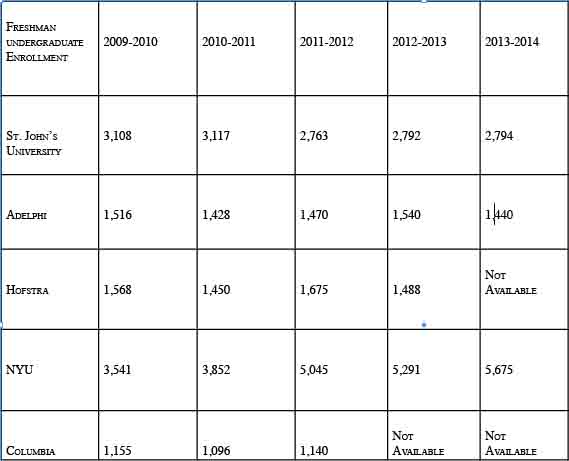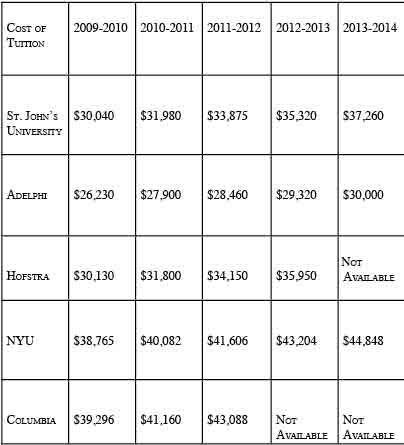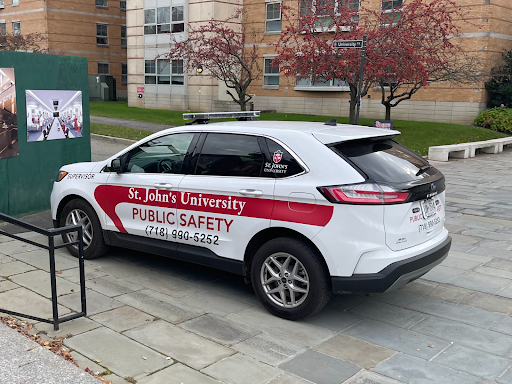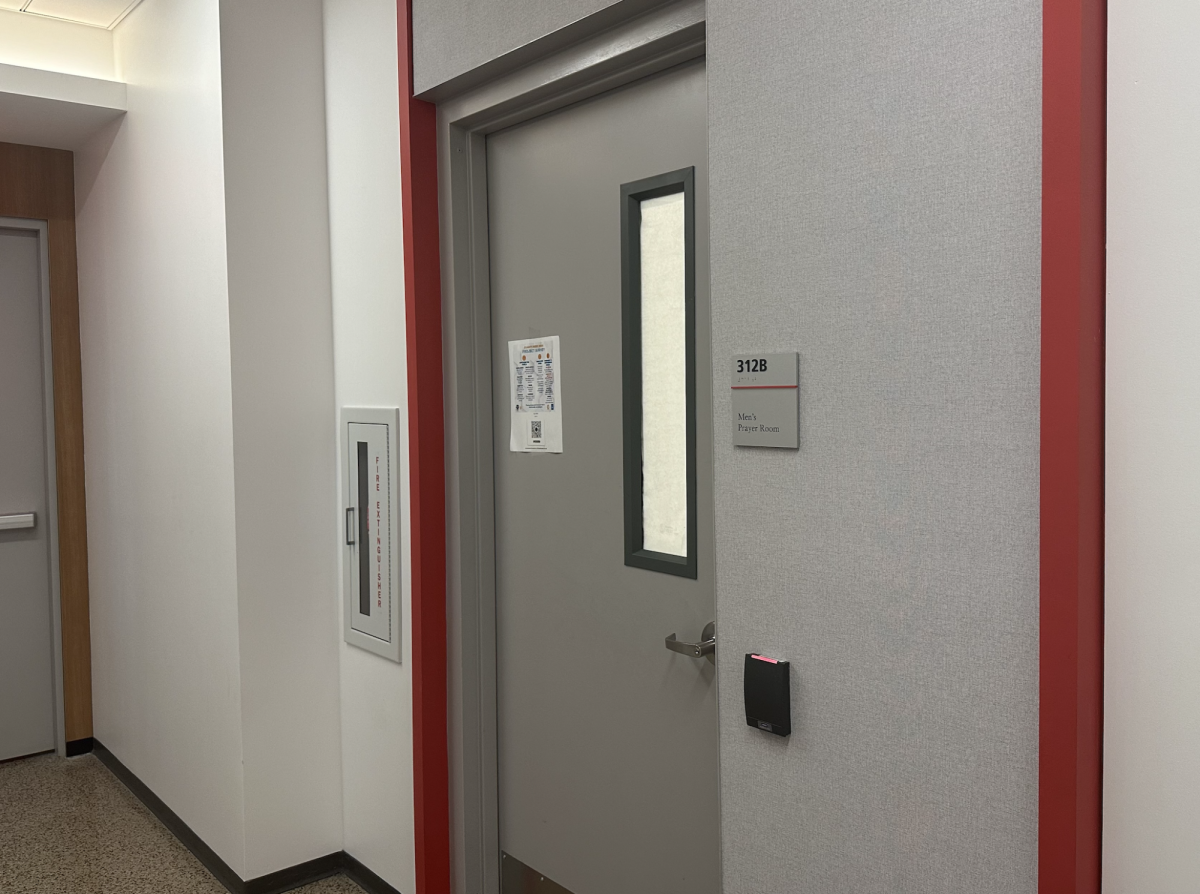The University is experiencing a steady decline of incoming freshman students for the last five years, according to official documents.
Since the 2009-10 academic year, the University has experienced a 10 percent drop in its full-time undergraduate freshman enrollment.
Over the same time frame, tuition has jumped from $30,040 to $37,260, representing a 24 percent increase.
The University enrollment and tuition figures for the last five years come from the publicly available offering statement, dated Nov. 6, 2013, for the bonds used to pay for the acquisition of 172-14 Henley Road dormitories.
Beth Evans, vice president of enrollment, said in a statement that national enrollment averages “peaked” in 2009 and there have been a “smaller number of high school graduates in the Northeast each year” since then.
Evans said that trend is expected to continue until 2021 and has caused colleges across the Northeast like St. John’s to adjust their enrollment goals.
“By doing so at St. John’s, we have been able to sustain even new students enrollment numbers over the past three years and at the same time, we have achieved meaningful gains in the average SAT and GPA scores for our incoming class,” Evans said. “In addition, since the decline in the economy, prospective students and parents evaluating the cost of tuition and funding their education with student loans.”
The offering statement reveals the increase of mean SAT scores of the University’s standard admitted students increased minimally from 1113 in 2009 to 1121 to fall of 2013. Meanwhile, applications have dropped by four percent while the number of acceptances has risen to 18 percent, from 22,788 in 2009-2010 to 26,932 this academic year.
In response to the increasing rate of tuition, she said the University offers competitive financial aid packages. In 2012-2013 academic year, the University distributed $470 million in financial aid, according to Evans.
Even so, New York City and neighboring Long Island are filled with over 100 private and public colleges that give prospective college students an array of choices.
The Torch reviewed other offering statements detailing their latest tuition and enrollment data from local colleges and found that universities such as NYU has increased their freshman enrollment steadily since 2009. Whereas Adelphi, Columbia and Hofstra, like St. John’s, had lower enrollment numbers over the same period.
However, tuition at all these aforementioned institutions (NYU to 15.6 percent, Columbia to 9.6 percent, Adelphi to 14 percent and Hofstra to 19 percent) have not risen as much as St. John’s.
Despite lower tuition rates, CUNY schools’ enrollment has decreased as well, according to CUNY Data statistics.
That leaves St. John’s in a precariously competitive situation.
Evans said the University is responding to the competition by promoting their new branding platform and graphic identity to drive local recruitment.
“A portion of the annual operating budget for media was reallocated to launch television, radio, print, outdoor, and online ads that can been seen throughout the New York metropolitan and tri-state areas to promote the pillars of our new brand,” Evans said.
The new brand, “Academic Excellence; Faith, Service, and Success; A Global City and a World Campus; An Alumni Network of 170,000; and New York City’s Team” began in January and will run through April 2014, according to Evans.
While Evans stresses the importance of gaining potential students locally and throughout the Northeast region, the University has expanded their recruitment efforts nationally and internationally.
“The plan includes a robust search and communication strategy, high school visits nationwide and internationally, area receptions, campus tours, overnight visits and over 30 events on campus each year,” she said. “Over the past seven years, we have expanded our recruiting efforts outside of the Northeast and have seen a steady increase in students from multiple states outside of our traditional target area, including California and Arizona, among others.”
In the event the University doesn’t receive enough students to meet the yearly budget, Evans said revenue also flows in from transfers, graduate students and alumni.
“The University plan is to budget conservatively and to create additional revenue sources so that St. John’s continues to be in a strong financial position,” she said. “Our recruitment goal every year is to continue to attract more transfer and graduate students.”
According to the offering statement, the University purchased the Henley residence for $63.67 million on Sept. 16.
















